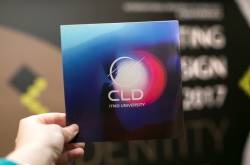We know that any substance consists of a large number of atoms. If we look at the substances' composition at a particular angle, we'll see that their arrangement is symmetrical. Yet, in certain cases, some of the atoms shift, and the symmetry is no more. According to doctor Bai, the symmetrical arrangement is present in all "normal" materials we use for mundane objects that surround us. Yet, if we use the asymmetrical arrangement, everything changes. As all atoms in a substance have a particular charge, the asymmetry will "divide" it, and if the material's shape is to change, the charge will circulate. Upon "releasing" the charge, the shape will return to the original state. Thus, if we continuously apply and release pressure, we'll have an electrical signal, which is a simple way to produce electricity. Doctor Yang Bai and his colleagues call their new material "piezoelectric".
"The scientific aspect of the invention is very simple - it is based on ours' and the surrounding world's very nature. When we design something, we know that the structure can be either symmetrical or asymmetrical. We know that symmetry looks good, for instance, in architecture or butterflies. Yet, asymmetry is good as well - we can see it all around us (take the Savior on Spilled Blood or Apple's logo). What's more, even we, people, are asymmetrical. Nature is asymmetrical - and we can see asymmetry in science, as well," shares Yang Bai.
 KBNNO piezoelectric material. Credit: eletimes.com
KBNNO piezoelectric material. Credit: eletimes.com
This invention serves as a basis for a new technology for producing energy, as it can turn any motion into electricity. Also, there are materials that turn solar energy and heat into electricity, as well. Solar cells and wind turbines are already a common thing.
"The things I'm talking about are of a lesser scale. You might even not understand that we lack energy for smaller things. Nowadays, when such devices as smartphones develop at a colossal speed, we understand that their batteries are lacking. There are many useful sensors and smart systems that allow to instantly receive and share information. I'm talking about different ambitious projects such as "smart" lenses or even "smart" eyes. Yet, do we have batteries with enough power for such devices? And would anyone want to put lenses with batteries in your eyes?" explains the scientists.
What are piezoelectric materials' advantages over batteries?
A power source's effective life is some 10 years. The new material is renewable, so it can be used for these ten years without using a lot of materials. Yet, if we use batteries, we'll use lots. Also, people prefer wireless devices, those that they won't have to charge via a cable and socket. These problems are easily solved by using a material that produces electricity, as it acts as a power source and is great from the ecological point of view.
So, how can one use the new technology? The applications are vast, says the doctor. For instance, every day we do particular motions with our knees and elbows, which we can use to produce energy for charging particular devices. There's also footwear - with each step, we apply pressure, and this energy can be collected, as well. Even the motion of air we experience while jogging can be collected. As of now, Doctor Yang Bai works with the Huawei company on developing an unusual wrist-wearable device (the device is already available on the market).
 Gathering electricity from pedestrians walking. Credit: filurin.ru
Gathering electricity from pedestrians walking. Credit: filurin.ru
"We've modified the device's shape by adding four short "lines" for collecting energy. Now, when we move, we can use the device to produce electricity. Also, we can assess our daily activity by checking how much energy we've produced," explains the scientist.
Yang Bai's colleagues showed how one can collect energy via footwear (the material is attached to the sole): the electricity is produced with each step. The output depends on one's weight and speed, yet it can be enough to fully charge a smartphone.
"This way, we can also use cars to charge traffic lights. People can produce energy by walking along lanes. Also, we can even design grass that will collect energy from wind. As of now, there's a certain company that collects energy by paving roads with special tiles: people produce energy by stepping on them. Actually, there are lots of different ways to apply this technology. The main feature of my work is that I bring together the different ways of collecting energy in a common material. Previously, we could collect energy from light, motion OR heat, and now, we can collect energy from light, motion, AND heat at the same time. That may sound like not much of a difference, yet it is a revolutionary technology," concludes Yang Bai.
The scientist's research is sponsored by the EU; as of now, there already are two projects on the material's integration. Doctor Yang Bai collaborates with ITMO's Higher School of Lighting Design in the field of creating smart accessories that will make use of the new technology to produce electricity from light, heat and kinetic energy.
The second project has to do with sidewalks, yet specialists are still working on the issue of sidewalks being not transparent, which prevents them from absorbing sunlight.





